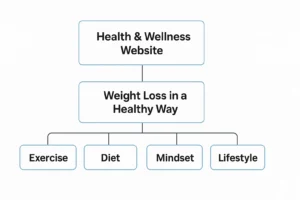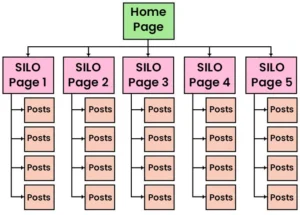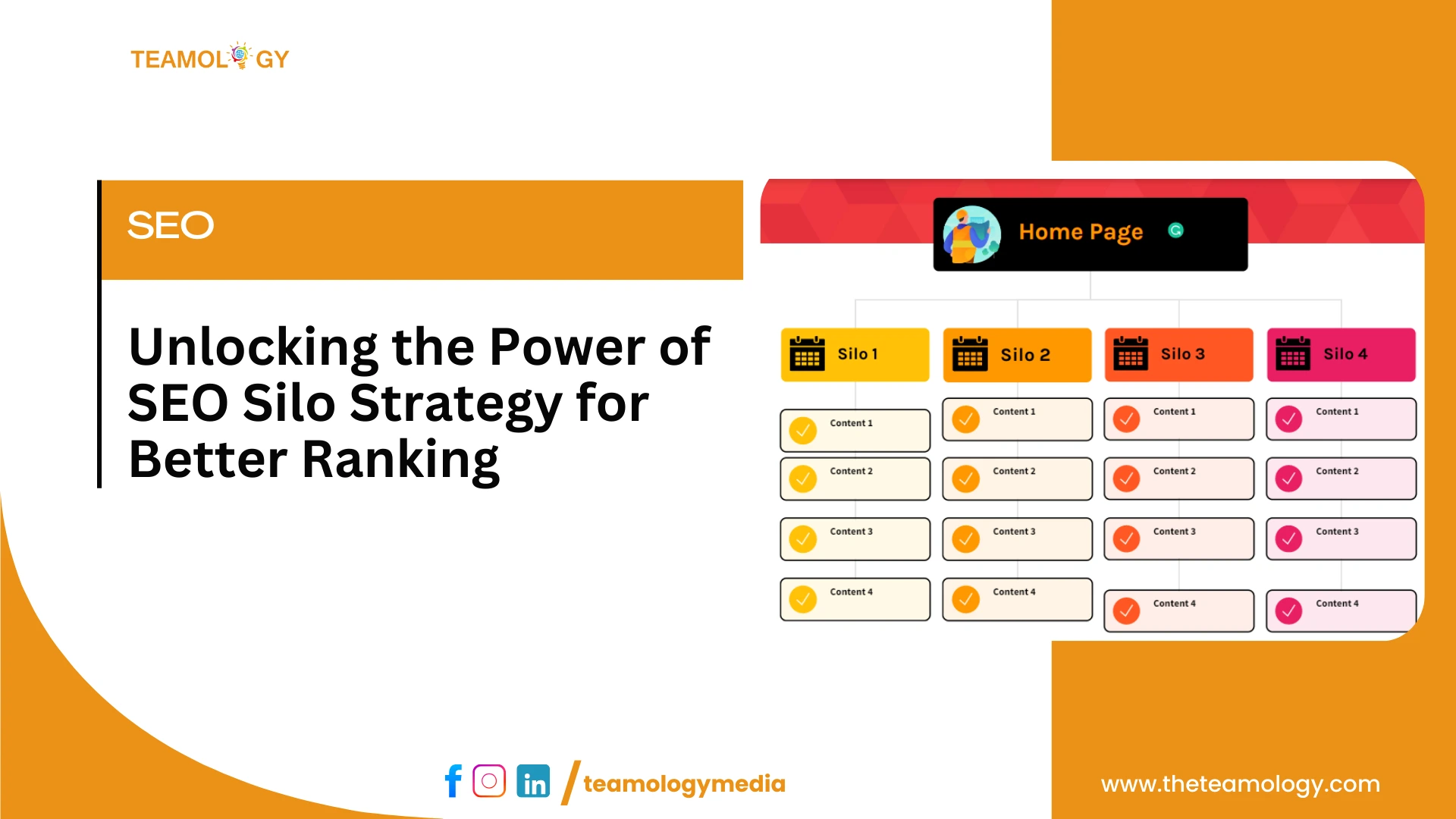Introduction
In an ever-competitive world of digital marketing, your website structure has the power to make or destroy your ranking potential. One of the most effective and often overlooked practices for improving an SEO strategy is the silo strategy. For a better understanding, think of it as transforming your website into a library with well-organised books that make it easier for both the visitors and the search engine to find the exact content they’re looking for.
In this article, we will explore what a website silo structure is, the benefits of using an SEO content silo, and how to build an effective silo strategy for sustained growth.
What is an SEO Silo Strategy?
An SEO silo strategy is a method of organizing your website content into clear, hierarchical categories, also called “silos.” Each silo focuses on a specific topic or theme, grouping together related articles, blog posts, and resources. Simply put, an SEO Silo strategy arranges content into distinct, interlinked categories. It is like organizing your website into neatly stacked files, wherein each file is devoted to a different theme. This creates a logical site architecture that signals to search engines the topical authority of your website.
For instance:

Silo Structure
Health & Wellness Website -> Main Topic: Weight Loss in a Healthy Way -> Subtopics: Exercise, Diet, Mindset, Lifestyle
This hierarchy forms an SEO content silo, where each subpage supports the main hub.
Why Does Website Silo Structure Matter?
More than just style, your website structure serves as the framework for your SEO. It holds it together. A website silo structure benefits both Google and users:
1. Search Engine Clarity
Grouping material into silos makes it easier for search engines to comprehend the purpose of your website. It is more likely to rank higher for relevant queries as a result because it understands what your website is about.
2. Improved User Experience
A properly designed content silo guarantees that users can navigate through your website with ease and that they are not lost while searching for the content they need. It ensures they flow through the information seamlessly.
3. Stronger Topical Authority
Search engines love depth. By grouping content into silos, you are showing that you are covering the topic thoroughly and not just skimming the surface.
4. Improved Internal Linking
Internal links are the veins of your website, carrying relevance and authority throughout your pages. Naturally, the internal linking should also follow a theme, blending perfectly into the silo content format.
5. Higher Conversion Potential
Easy-to-find content increases the likelihood that visitors will convert. Converting could mean contacting you, buying something, or subscribing.
Benefits of an SEO Silo Strategy
Let’s examine the specific advantages of implementing an SEO silo strategy:
- Improved Crawlability: The Google bots crawl your pages more efficiently, ensuring that none of your content is missed or hidden.
- Boosted Rankings: A robust website silo structure helps you dominate search results by improving keyword relevancy.
- Reduced Bounce Rate: When users can navigate related content within a content silo, they stay longer because all the information they need is in one place.
- Long-Term Growth: Over time, an effective silo strategy builds topical authority. This implies that your website is able to compete with larger brands.
- Content Expansion Opportunities: Once your silos are established, you can continue to add new subtopics to strengthen your SEO base.
Building an Effective Silo Strategy
Now that we understand what is silo structure and why it matters, let’s begin the process of developing a successful silo strategy. Here’s how to build it:
1. Keyword mapping (your silos)
Choose four to six major themes that represent the interests of your audience and your company’s objectives. Sort these themes by terms. These form the silo structure of your website. Then choose a major keyword (wide topic) and supplementary secondary keywords (subtopics) for every silo. This guarantees that all of your content is in line with your SEO plan.
For example, your SEO content silo may have the following under the “SEO” silo:
- On-page SEO
- Keyword Research
- Link Building
- Technical SEO
2. Establish a Logical Site Architecture
The site architecture of your website should be like a pyramid:

Silo Architecture
Homepage → Silo (Category page) → Subtopics Page → Supporting Content
Internal links should be created within each silo, but avoid cross-linking too heavily. This keeps the topical focus and avoids keyword dilution. Create in-depth “hub” content centred on general subjects, and every hub should link to detailed subtopics.
3. Optimize On-Page SEO
For optimal clarity, make use of meta tags, structured headings, and semantic keywords. Each page in a silo needs to be optimised using primary and secondary keywords that are included in title tags and meta descriptions. For a clear hierarchy, use header tags (H1, H2, H3). This improves on-page SEO and increases the relevance of your website structure.
4. Build Internal Linking Bridges
Consider every content silo to be a cluster. Make sure the main page of the silo is linked from all relevant articles. Internal linking acts as the glue that holds your SEO silo strategy together. Undoubtedly, without proper internal linking, even a well-planned website silo structure will fall apart. Make sure to link child pages to the parent page and vice versa. Also, it is important to connect sibling pages naturally wherever it makes sense to do so.
5. Consistently Expand and Update
An effective silo strategy is dynamic. Continue adding new material, subtopics, and refined internal linking to your silos. This consistent engagement maintains your site’s relevance and communicates authority.
Common Mistakes to Avoid
When silos are not well implemented, it is a recipe for disaster. Even the best SEO strategy will not be immune to failure. So watch out for the following:
- Overlapping Silos: Keep each content silo concentrated and avoid mixing the topics.
- Thin Content: Steer clear of making a lot of pointless subpages that have little value to offer.
- Ignoring Internal Links: A silo without internal links is comparable to a structure without doors.
- Neglecting User Experience: Keep in mind that the website silo structure should serve the users before search engines.
Conclusion
A well-planned and executed SEO silo strategy turns your website from a disjointed jigsaw into a structured and organized masterpiece. A well-designed website silo structure helps you build topical authority and enhance on-page SEO. Your audience will have a smooth experience navigating through your website, hence increasing credibility and trust.
Once silos are established, they serve as the foundation for everything else you develop. Whether you manage a small blog or a large eCommerce site, it is now imperative to execute an effective silo strategy. If you’re ready to take your website from scattered to strategic, contact us today and watch your rankings, authority, and conversions grow.


